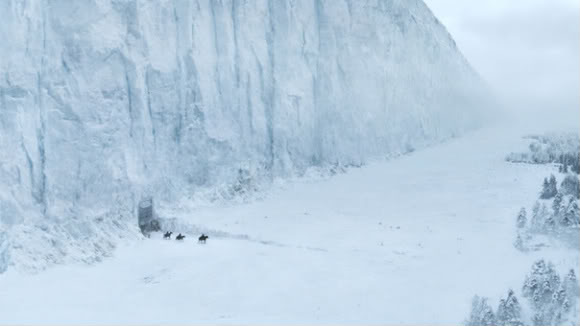A Comet May Have Caused the Winter of 536 to Last for 10 Years
Oh, that's why it's called the Dark Ages

General consensus is that the Dark Ages were the worst of all the ages. Unicorns went extinct, you were either a witch or had the plague, and oh yeah, winter lasted for ten years once.
A recent article in New Scientist is giving some scientific validity to the big chill recounted in ancient medieval texts such as this one:
“And it came about during this year that a most dread portent took place. For the sun gave forth its light without brightness, like the moon, during this whole year, and it seemed exceedingly like the sun in eclipse, for the beams it shed were not clear nor such as it is accustomed to shed”
Procopius (Wars, 4.14.5)
That sounds pretty awful, so I’m going to go ahead and stop complaining about winter 2014. I’m not a serf, and the sun is still giving forth its light with some brightness, so apparently I’m doing okay.
This eternal winter understandably caused medieval conflicts, since crops were scarce and with the weather always bad, there was nothing to make small talk about anymore.
The sun began to be darkened by day and the moon by night, while the ocean was tumultuous with spray from the 24th of March in this year till the 24th of June in the following year… And, as the winter was a severe one, so much so that from the large and unwonted quantity of snow the birds perished… there was distress… among men… from the evil things”
Zacharias of Mytilene (Chronicle, 9.19, 10.1)
Colin Barras’ fascinating New Scientist article looks deeper into these texts and what was going on in the world circa 536-546, to see if this frigid phenomena was real and if he could determine a cause.
Although one theory is that the winter was a result of weather disturbances caused by a supervolcano in El Salvador, Barras thinks geologist Dallas Abbott has a better idea of what prompted the unseasonable weather.
Abbott and her team have been studying ice core specimens in Iceland, and have found an unusual concentration of nickel and tin in the cores dating back to 536. Even more startling is that these ice cores also contained preserved microorganisms and the fossils of ancient marine life. Abbot believes these fragments are extraterrestrial, and more than likely shards of a comet.
Abbott believes these are yet more clues that some sort of space debris struck Earth in 536 and plunged it into winter, and she suggests Australia’s Gulf of Carpentaria as a possible impact point.
Abbott even believes she knows the name of the culprit whose shards were responsible for ten years of human misery. “We know that Halley’s comet came by Earth in 530,” says Abbott. “And the Chinese record indicates it was unusually bright.”
Obviously Abbott’s theory is still only that, but it’s interesting to think there may be some validity behind the depressing medieval weather reports, if only because it helps us gain perspective on our own seasonal depression.
(via io9 and New Scientist, image via Game of Thrones)
- “Janus” was probably not the best name to give this winter storm
- What is this polar vortex thing and why does it hate us so much?
- Don’t believe in ghosts? Scientists are working on it
Have a tip we should know? tips@themarysue.com